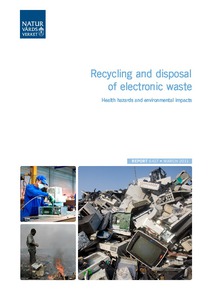Recycling and disposal of electronic waste: health hazards and environmental impacts
"E-waste is today the fastest growing sector of the municipal solid waste stream and currently comprises more than 5% of its total flow, i.e. 20-50 million tones a year worldwide. These enormous quantities, in combination with the fact that e-waste contains a wide range of hazardous compounds,...
| Institution: | ETUI-European Trade Union Institute |
|---|---|
| Format: | TEXT |
| Language: | English |
| Published: |
Stockholm
2011
SNV |
| Subjects: | |
| Online Access: | https://www.labourline.org/KENTIKA-19126036124919442189-Recycling-and-disposal-of-elec.htm |
| Summary: | "E-waste is today the fastest growing sector of the municipal solid waste stream and currently comprises more than 5% of its total flow, i.e. 20-50 million tones a year worldwide. These enormous quantities, in combination with the fact that e-waste contains a wide range of hazardous compounds, have turned e-waste into a global environmental issue. When the e-waste is treated, in general waste processes or in recycling processes, hazardous compounds may be released and pose a threat to humans and the environment. In addition, in some treatment processes, hazardous compounds, such as dioxins, may be formed as the original e-waste components are degraded. This report summarizes and compares the hazards and risks that may arise in different processes." |
|---|---|
| Physical Description: | 135 p. Digital |

